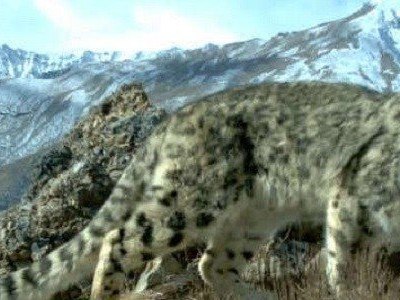NANDA DEVI NATIONAL PARK | TREKKING & SIGHTSEEING TO NANDA DEVI
![]() Wildlife |
Wildlife | ![]() Adventure
Adventure
About Nanda Devi National Park
 Country: India | State: Uttarakhand
Country: India | State: Uttarakhand
 #18 of 18 Places to visit in Uttarakhand
#18 of 18 Places to visit in Uttarakhand
 Ideal Trip Duration: 5 Full Days
Ideal Trip Duration: 5 Full Days
 Nearest City to Nanda Devi National Park: Dehradun (345 Kms)
Nearest City to Nanda Devi National Park: Dehradun (345 Kms)
 Best Time to Visit Nanda Devi National Park: May to October
Best Time to Visit Nanda Devi National Park: May to October
 Peak Season: June & September
Peak Season: June & September
At a distance of 26 km from Lata Village, 52 km from Joshimath, 94 km from Badrinath, 300 km from Rishikesh, 345 km from Dehradun, 327 km from Haridwar and 535 km from Delhi, Nanda Devi National Park is situated in the higher ranges of Himalayas in Chamoli district of Uttarakhand. The entire park lies at an altitude of 3,500 m and is surrounded by the Nanda Devi Mountains on three sides. It is one of the most scenic national parks in India apart from being a top trekking destination as well as one of the popular Tourist places in Uttarakhand.
The Nanda Devi basin was declared a game sanctuary in 1939. In 1982, an area of 630.33 sq. km was added and it was declared a national park, which now forms the core zone of Nanda Devi Biosphere Reserve. Along with adjoining Valley of Flowers National Park, Nanda Devi Park was inscribed as UNESCO World Heritage Site in 2004.
Nanda Devi National Park covers an area of 630.33 sq. km, which is surrounded by a buffer zone of 5148.57 sq. km. The whole region of Nanda Devi National Park falls under the Western Himalayas Endemic Bird Area (EBA). The park is divided into two parts - Inner Sanctuary and Outer Sanctuary. The Upper Rishi Valley, often referred to as the Inner Sanctuary is featured by Changabang, North Rishi and North Nanda Devi glaciers. The Trisul and Ramani glaciers are features of the Outer Sanctuary. The forest cover in this park is mainly restricted to the Rishi Gorge and the inner circle is quite dry.
The park provides shelter to snow leopard, Himalayan black-bear, serow, Himalayan musk deer and Himalayan Tahr. There are around 114 species of birds, including orange-flanked bush robin, Indian tree pipit, yellow-bellied fantail flycatcher, blue-fronted redstart and vinaceous-breasted pipit. Varied species of butterflies can also be seen in the Nanda Devi National Park. The park has around 312 species of flowers, along with juniper and alpine vegetation.
Trekking is the most popular activity in the national park. In 1982, access to trekkers was banned to protect the biodiversity. However recently, tourists in small numbers are allowed to visit the park. Visitors need to get the permission from Nanda Devi National Park Authorities, Joshimath for the trek. The visitors will move in groups and each group will consist of maximum of five visitors. Not more than two groups are permitted in one day and not more than four groups will be permitted in one week. One registered guide will accompany every five visitors. Visitors above 14 years will only be allowed to participate in the trek. The entry point to the park is Lata Village which is around 26 km from Joshimath and the trek exits at Surai Thotha which is 30 km from Joshimath.
The total duration of Nanda Devi Trek is 5 Full Days.
Day 1: Lata Village - Lata Kharak (9 km, 8-9 Hours)
The first day of the trek is probably the toughest and involves a steep ascent of almost 1524 m with a break at Belta and it takes 8-9 hours. The camp at Lata Kharak is situated at an altitude of 3689 m and is surrounded by high peaks.
Day 2: Lata Kharak - Dharansi Pass (10 km)
The trek begins with a steep climb up to Jhandi Dhar and further up to Bagfyana pass. From here the trail ascends and descends through the narrow gorge of Satkul to Dharansi Pass (4250 m).
Day 3: Dharansi Pass - Debrugheta - Dharansi Pass (14 km)
Trek to Malthuni - Bethratoli Ridges of the inner and outer sanctuary form a magnificent pass up to Rani Kholi and Donidhar. The trail is a steep descent of about a kilometer to Debrugheta. Return to Dharansi Pass by late afternoon.
Day 4: Dharansi Pass - Hitoli Camp Site (12 km)
Return trek up to Jhandi Dhar of about 7.5 km and further steep descent of 4.5 km to the Hitoli camp site through thick forests of Rhododendron, Birch and Fir. Overnight stay in tents at Hitoli campsite.
Day 5: Hitoli Campsite - Tolma - Surai Thotha (8 km)
One has to trek 5 km to Tolma village through the rich forest of Thuner, Kail, devdar and Surai. Then further trek down 3 km to Surai Thotha, from where it is a 30 km drive to Joshimath.
There are very few accommodation options near the national park. Visitors can choose to stay in the hotels at Joshimath. There are hardly any restaurants within the park. It is advisable to carry food and water.
Jolly Grant Airport at Dehradun is the nearest Airport to Nanda Devi Park at a distance of 319 km. Rishikesh is the nearest Railway Station which is 300 km away from the Park. About 26 km from the Park, Lata Village is the nearest motorable road, while Joshimath is the major bus hub which is 52 km from the Park.
The ideal time to visit the Nanda Devi National Park is from May to October. In the months of June to August, there is heavy rainfall in the area. The route to Nanda Devi remains
None



































